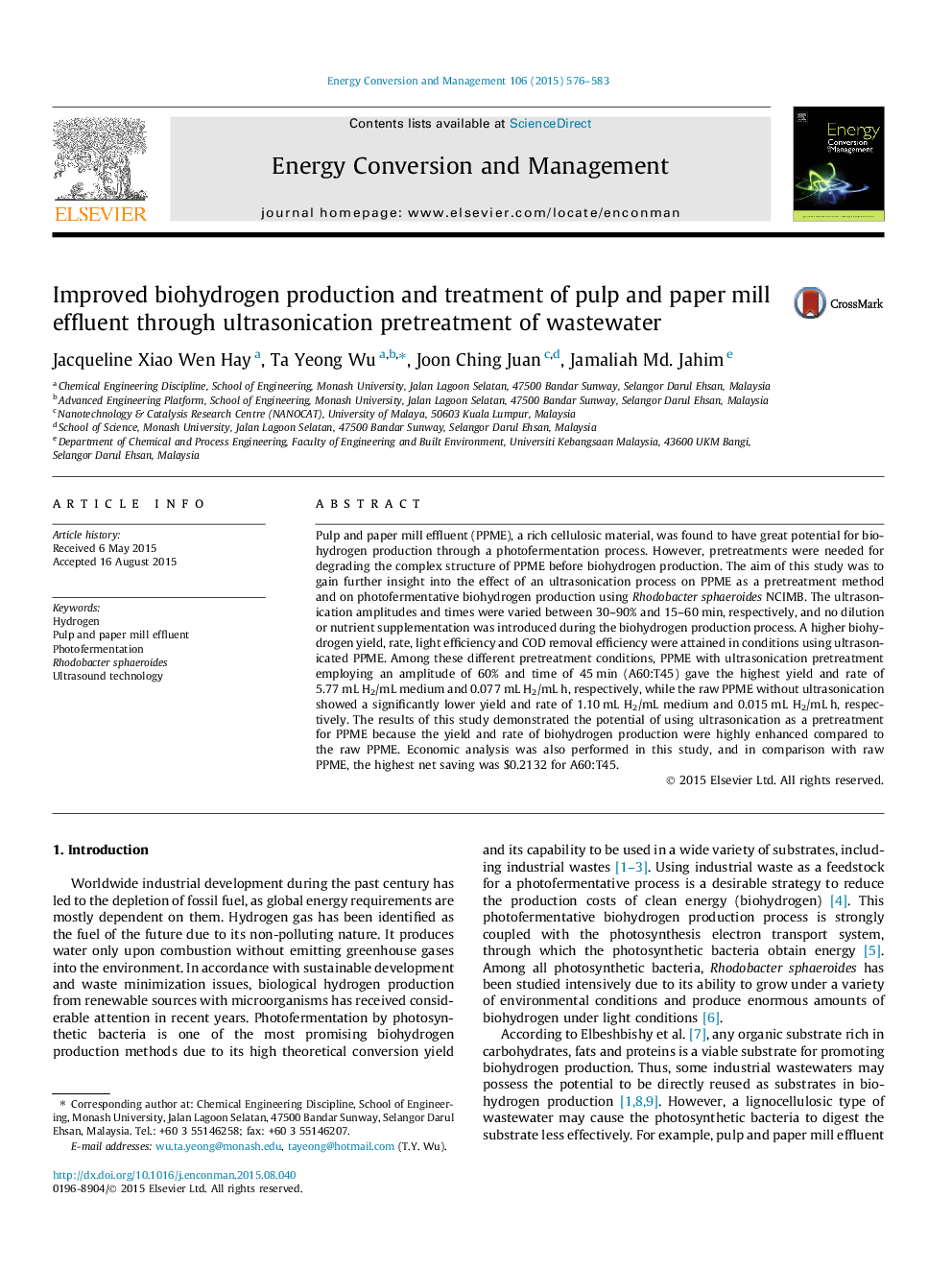| Article ID | Journal | Published Year | Pages | File Type |
|---|---|---|---|---|
| 7161889 | Energy Conversion and Management | 2015 | 8 Pages |
Abstract
Pulp and paper mill effluent (PPME), a rich cellulosic material, was found to have great potential for biohydrogen production through a photofermentation process. However, pretreatments were needed for degrading the complex structure of PPME before biohydrogen production. The aim of this study was to gain further insight into the effect of an ultrasonication process on PPME as a pretreatment method and on photofermentative biohydrogen production using Rhodobacter sphaeroides NCIMB. The ultrasonication amplitudes and times were varied between 30-90% and 15-60Â min, respectively, and no dilution or nutrient supplementation was introduced during the biohydrogen production process. A higher biohydrogen yield, rate, light efficiency and COD removal efficiency were attained in conditions using ultrasonicated PPME. Among these different pretreatment conditions, PPME with ultrasonication pretreatment employing an amplitude of 60% and time of 45Â min (A60:T45) gave the highest yield and rate of 5.77Â mL H2/mL medium and 0.077Â mL H2/mLÂ h, respectively, while the raw PPME without ultrasonication showed a significantly lower yield and rate of 1.10Â mL H2/mL medium and 0.015Â mL H2/mLÂ h, respectively. The results of this study demonstrated the potential of using ultrasonication as a pretreatment for PPME because the yield and rate of biohydrogen production were highly enhanced compared to the raw PPME. Economic analysis was also performed in this study, and in comparison with raw PPME, the highest net saving was $0.2132 for A60:T45.
Keywords
Related Topics
Physical Sciences and Engineering
Energy
Energy (General)
Authors
Jacqueline Xiao Wen Hay, Ta Yeong Wu, Joon Ching Juan, Jamaliah Md. Jahim,
